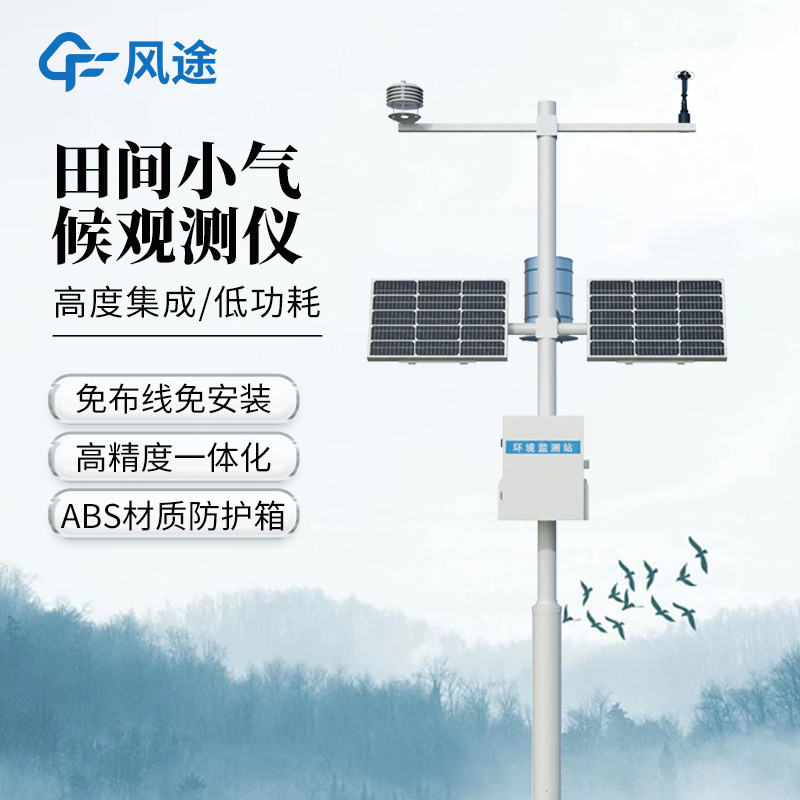Shandong Fengtu IOT Technology Co., Ltd
Sales Manager:Ms. Emily Wang
Cel,Whatsapp,Wechat:+86 15898932201
Email:info@fengtutec.com
Add:No. 155 Optoelectronic Industry Accelerator, Gaoxin District, Weifang, Shandong, China

Sales Manager:Ms. Emily Wang
Cel,Whatsapp,Wechat:+86 15898932201
Email:info@fengtutec.com
Add:No. 155 Optoelectronic Industry Accelerator, Gaoxin District, Weifang, Shandong, China
time:2025-07-23 09:21:31 source:Weather Station viewed:165 time
In the process of agricultural development, the construction of unmanned farms has become an important direction for the development of modern agriculture. In this process, Agricultural meteorological stations, by providing refined meteorological services combined with mobile applications, make farming more intelligent and efficient.
Agricultural meteorological stations are devices specially used to monitor meteorological elements in farmland, capable of real-time monitoring of multiple key meteorological parameters. Temperature affects the growth rate and development process of crops; humidity is related to crop water absorption and the breeding of diseases and pests; light provides energy for photosynthesis; wind speed and direction affect farmland ventilation and crop safety; precipitation directly determines the water supply of farmland. These accurately monitored data provide a data basis for agricultural production.
The data transmission function enables the efficient utilization of data from Agricultural meteorological stations. Advanced devices wirelessly transmit real-time meteorological data to terminals such as mobile phones, allowing users to view and analyze it anytime and anywhere through applications. When farmers are away, they can know whether the farmland temperature has dropped sharply or the humidity is too high through their mobile phones, providing a basis for agricultural operations.
The early warning function is an important guarantee. After setting thresholds, when abnormalities such as excessively low temperature, excessive wind speed, or heavy rainfall are monitored, alerts will be sent quickly. After receiving the alerts, farmers can promptly take measures such as covering for heat preservation, reinforcing protection, and turning on drainage to reduce risk losses.
Based on meteorological data, Agricultural meteorological stations can provide decision support. By analyzing data trends and combining with crop models, irrigation plans can be adjusted: increase irrigation in hot and dry weather, and suspend irrigation when soil moisture is sufficient. Guide the timing and amount of fertilization according to temperature and humidity conditions to improve fertilizer utilization; early warn of diseases and pests that are prone to outbreak under specific meteorological conditions to assist in prevention and control.
In unmanned farms, Agricultural meteorological stations are closely integrated with mobile phone-based farming. Farmers obtain real-time meteorological data through mobile phones and control unmanned agricultural machinery for precise operations: using drones for sowing and fertilizing when temperature and humidity are suitable, and arranging irrigation equipment to stop work and take shelter before severe weather. Meteorological data, together with systems such as soil moisture and crop growth, provide comprehensive support for unmanned farm management, optimize production processes, improve yield and quality, and promote sustainable agricultural development.

Tunnels are enclosed spaces with poor air circulation, and due to complex traffic structures and heavy traffic volumes, poor ventilation can easily lead to the accumulation of harmful gases such as smoke particles and carbon monoxide (CO). This significantly reduces visibility inside the tunnel and...
Micro Weather Station is a highly practical meteorological monitoring device and has significant value in rural and remote areas in China. Fengtu's Micro Weather Station is powered by batteries. Its 12000mAh battery provides sufficient power for the entire system. This power supply method gets r...
Highway tunnels, as special sections of the highway network, are a unique type of tubular structure. The internal space is relatively narrow, with drastic changes in light and poor visibility. Due to the significant difference in illumination inside and outside the tunnel, drivers are extremely vuln...
This article introduces two Portable Weather Stations: the Handheld Weather Station FT-SQ11 and the Portable Weather Station FT-BQX8 with a tripod.Handheld Weather Station FT-SQ11The FT-SQ11 is compact and lightweight, measuring 37020880mm and weighing only 363.2g for effortless portability. Its 3.5...